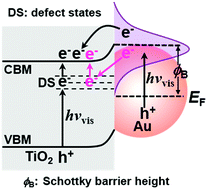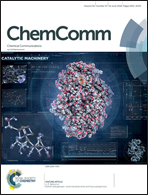Defect state-induced efficient hot electron transfer in Au nanoparticles/reduced TiO2 mesocrystal photocatalysts†
Abstract
We investigated Au/TiO2 mesocrystals as plasmonic photocatalyst prototypes using single-particle photoluminescence (PL) spectroscopy combined with finite-difference time-domain (FDTD) simulations, and found that introduction of defect states builds up a channel for hot electrons with energies lower than the Schottky barrier height to transfer to the semiconductor.



 Please wait while we load your content...
Please wait while we load your content...